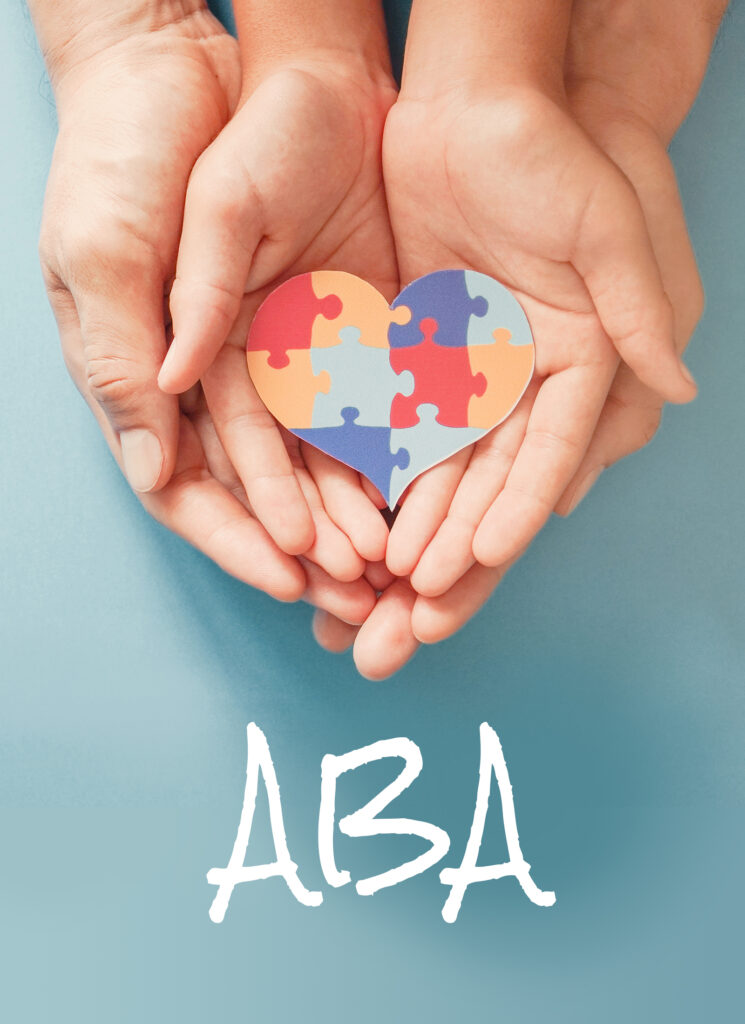If you have close ones who have a diagnosis of autism, you may be wondering what the next step is. ABA therapy is often a recommendation for people on the spectrum, and finding a professional therapist can seem daunting. This blog post will explain what ABA therapy is and how to find an ABA therapist who can help your loved one reach their full potential.
Contents
Who Is ABA Therapist?

ABA therapists are specially trained in ABA therapy. It is a common acronym for Applied Behavior Analysis, a type of therapy that is used to help people with autism change their behavior. ABA therapist works with the individual to identify triggers for certain behaviors and then teaches them new skills to replace those behaviors. ABA therapy is based on the premise that all behavior has a purpose or function. By understanding why a person is engaging in a certain behavior, the therapist can then teach them a more appropriate way to get their needs met.
In addition to autism, ABA therapy can also be useful to help people with other developmental disabilities, such as Down syndrome and cerebral palsy. Although it is only focuses on benefitting children, this approach to therapy can be used with people of all ages.
Types Of ABA Therapy
There are two main types of ABA therapy:
- Discrete trial training (DTT): This is the most common type of ABA therapy. It involves breaking down the desired behavior into small steps and then teaching those steps one at a time. For example, if the goal is to teach a child to ask for a drink, the therapist may start by teaching them to say “I want.” Once the child has mastered that step, they would move on to the next step, which might be saying “I want water.” DTT is usually done in short sessions (15-20 minutes) several times a day.
- Natural environment training (NET): This type of ABA therapy focuses on teaching skills in more naturalistic settings, such as at home or in the community. NET is less structured than DTT and often involves teaching skills through play. For example, a child may be taught to ask for a drink by being given a pretend cup and being asked “What do you want?” NET is usually done in longer sessions (30-60 minutes) once or twice a day.
The most suitable type of ABA therapy for an individual will be based on their needs and preferences. Many people benefit from a combination of both DTT and NET.
Principles Used By ABA Therapist
There are four main principles of ABA therapy:
Reinforcement
This is when a behavior is followed by a consequence that makes it more likely to happen again. For example, if a child gets a toy they want after tantrumming, they are more likely to tantrum again in the future to get what they want.
Reinforcements are of two types: positive and negative.
- Positive reinforcement is when a desirable consequence is given after the desired behavior, such as praise or a treat.
- Negative reinforcement is when an unpleasant consequence is removed after the desired behavior, such as getting out of time-out.
Both positive and negative reinforcement can be used to increase desired behaviors. It’s important to note that punishment should never be used in ABA therapy, as it can decrease the likelihood of desired behaviors occurring.
Extinction
This is when a behavior stops happening because it is no longer being reinforced. For example, if a child stops having temper tantrums because they realize it doesn’t get them what they want, the tantrums will eventually stop.
Extinction can be a difficult process for both the individual and the therapist, as it can often result in an increase in the behavior before it decreases. However, it is a necessary part of ABA therapy, and with patience and consistency, desired behaviors will eventually replace undesired ones.
Shaping
This is when a behavior gradually changes by reinforcing successive approximations of the desirable behavior. For example, if a child is tantrumming and the therapist wants to teach them to ask for what they want instead, they may start by reinforcing any time the child asks for anything, even if it’s not exactly what they want. Then, they would only reinforce requests for the specific thing that the child originally wanted.
Chaining
This is when a behavior consists of smaller behaviors that are put together, like links in a chain. For example, if a child is being taught to ask for help, they may first need to learn how to say the word “help.” Then, they would need to learn how to put their hand up. Once they can do both of those things, they can put them together and ask for help by saying the word and putting their hand up at the same time.
These principles form the basis of ABA therapy and are used to help individuals with autism or other developmental disabilities learn new skills and replace undesired behaviors.
Techniques
To make use of these principles, therapists may adopt various tricks and techniques, such as:
- Setting clear expectations and rules
- Using visual aids to help explain concepts
- Breaking down tasks into small, manageable steps
- Encouraging positive behaviors with rewards like stickers or praise
- Ignoring negative behaviors
- Helping them learn new skills
- Modeling appropriate social behaviors
- Fading out rewards as the child begins to display positive behaviors more consistently
- Working with other members of the child’s treatment team, like teachers and parents
- Documenting progress and communicating with families
All of these are important techniques that help ABA therapists achieve their goals.
The 7 Dimensions Of ABA Therapists
ABA therapy is not just about teaching new skills. It’s also about understanding why certain behaviors occur and preventing them from happening again in the future. This is done through what is known as the seven dimensions of ABA therapy. It is popularly known by the acronym GET-A-CAB. We will now know to understand what this means.
- Generality: Generality, is about making sure that the skills an individual learns in therapy can be generalized to other people and situations. For example, if a child is taught how to ask for a drink at home, they should also be able to ask for a drink at school or at a friend’s house.
- Effective: Effectiveness is about making sure that the skills an individual learns are actually effective in helping them reach their goals. For example, if a child is trying to learn how to communicate their wants and needs, the therapist would want to make sure that they are actually learning how to do this effectively and not just memorizing words or phrases.
- Technological: This is about using technology to help individuals with autism or other developmental disabilities learn new skills. For example, there are many apps and computer programs that can help to teach individuals with autism how to communicate or how to follow directions.
- Analytic: Analytical front is about using data to track an individual’s progress and determine which interventions are working and which ones are not. For example, a therapist may keep track of how often a child uses a particular communication device or how many words they are saying correctly.
- Conceptually Systematic: Being conceptually systematic is about teaching new skills in a way that makes sense to the individual. For example, if a child is trying to learn how to count, the therapist would start by teaching them one-to-one correspondence (i.e., matching each number with a corresponding object).
- Applied: Application is about making sure that the skills an individual learns are actually put to use in their everyday life. For example, if a child is taught how to ask for a drink at home, the therapist would want to make sure that they are actually using this skill at home and not just during therapy sessions.
- Behavioral: Behavior is about understanding why certain behaviors occur and preventing them from happening again in the future. For example, if a child is engaging in self-injurious behavior, the therapist would want to understand why this is happening and what they can do to prevent it from happening again.
These dimensions of ABA Therapy are important to understand to provide the best possible therapy for individuals with autism or other developmental disabilities.
Benefits Of Seeing An ABA Therapist
If your child has autism, or you think they may have autism, it is important to seek out professional help. ABA therapy has been an effective treatment for autism and can help children with autism learn new skills and improve their quality of life.
Some of the benefits of seeing an ABA therapist include:
- improved communication skills
- improved social skills
- increased academic achievement
- improved behavior
- increased ability to function independently
In addition to helping the child, it can also teach the parents or guardians to effectively communicate with your child and understand their needs. You will also learn how to manage challenging behaviors and prevent them from occurring again in the future.
This can result in elevating the child’s, as well as the parent’s, quality of life. They can also learn new skills and communication strategies.
Qualities Of A Good ABA Therapist

Not all ABA therapists have equal reputation. When looking for a therapist, it is important to find one that is a good fit for your child and your family. Here are some qualities to look for in a good ABA therapist:
- Patience: A good ABA therapist will have the patience to work with your child at their pace. They will also be patient with you as you learn how to effectively communicate with your child.
- Flexibility: A good ABA therapist will be flexible in their approach. They will also try different techniques or strategies if something isn’t working.
- Creativity: A good ABA therapist will be creative in their approach. They will come up with new ways to teach your child the skills they need to learn.
- Compassion: A good ABA therapist will be compassionate and understand the challenges you and your child are facing. They will be empathetic and will provide support when needed.
- Good Communication Skills: A good ABA therapist will have good communication skills and be able to effectively communicate with you, your child, and other professionals on your child’s team.
All of these can be important when finding the right ABA therapist for your child. It is important to interview several therapists before making a decision and to trust your gut when it comes to finding the right fit.
Finding The Right ABA Therapist
The best way to find a good ABA therapist is to ask for recommendations from your child’s doctor. You may also approach other professionals on your child’s team, or other parents of children with autism. You can also search online for therapists in your area.
When you have a list of potential therapists, it is important to interview them and ask them important questions. Some sample questions may include:

- How long have you been working as an ABA therapist?
- What is your experience working with children with autism?
- What are your qualifications?
- How do you develop treatment plans?
- What strategies do you use to teach new skills?
- What is your approach to ABA therapy?
- How do you manage challenging behaviors?
- What are your availability and hours?
- What is your fee?
After you have interviewed the potential therapists, it is important to trust your gut instinct. Choose the one that you feel is the best fit for your child.
Remember, the goal of ABA therapy is to improve the quality of life for both the child and the family. With the right therapist, you can achieve this goal.
What To Expect During Therapy Sessions?

ABA therapy sessions typically happen in a one-on-one setting, but can also be take place in a small group setting. The therapist will work on teaching your child new skills or improving existing skills. This can happen through a variety of activities and exercises that specifically cater to your child.
The number of therapy sessions will depend on your child’s individual needs and goals. Some children may only need a few sessions per week, while others may need multiple sessions per day. The length of each session will also vary depending on your child’s needs.
It is important to remember that progress may not happen overnight and it is important to be patient during the process. The therapist will work with you to set goals and track progress so that you can see the improvements your child is making.
Things To Consider
Before seeing an ABA therapist, it is important to keep some things in mind.
- First, ABA therapy is not a “quick fix” and it may take some time to see results.
- Second, ABA therapy is not a “cure” for autism. However, it can help your child to improve their skills and quality of life.
- Third, ABA therapy is not one-size-fits-all and the therapist will tailor the approach to meet your child’s individual needs.
- Fourth, ABA therapy requires a commitment from both the child and the family.
- Finally, ABA therapy can be costly, but there are many resources available to help with the cost.
If you are considering ABA therapy for your child, it is important to do your research and find a qualified therapist. You should also feel comfortable with them. With the right ABA therapist, you can see amazing results.
Conclusion
In conclusion, ABA therapy is a type of therapy that specifically caters to children with autism. ABA therapists use a variety of techniques to teach new skills and improve existing skills.
The number of sessions and the length of each session will vary depending on the child’s individual needs. It is important to work with a qualified therapist that you feel comfortable with. ABA therapy can be costly, but there are many resources available to help with the cost.
For more information, please contact MantraCare. Online therapists are increasingly important in today’s world because they provide a convenient and accessible way for people to receive mental health support and treatment. Visit MantraCare If you are searching for “therapist near me”. Book a trial Online therapy session


